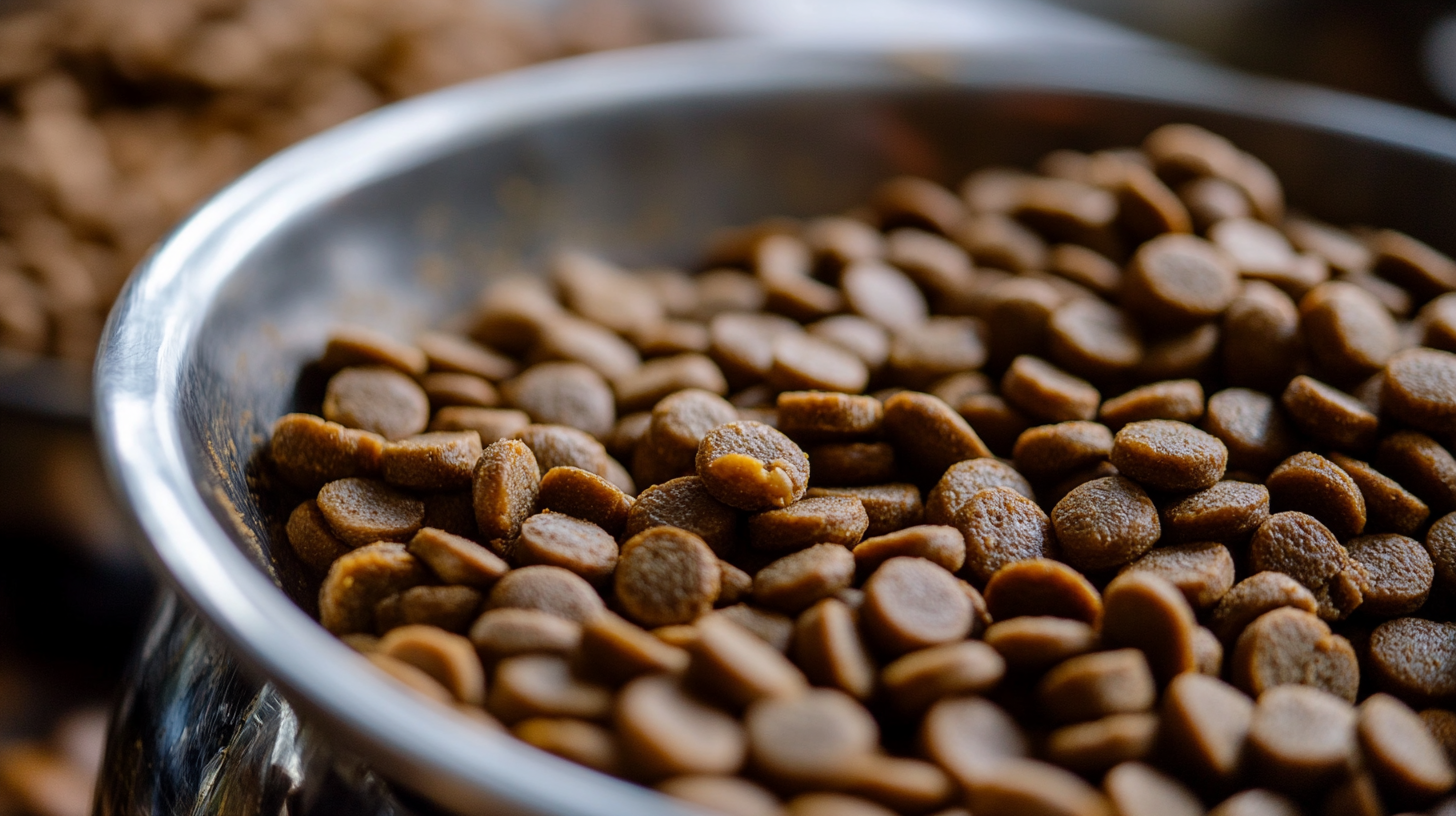When it comes to our furry companions, choosing the right dog food is one of the most important decisions we can make for their health and happiness. With a plethora of options available in the market, it can be overwhelming to decipher which products are genuinely nutritious and suitable for your dog’s unique needs. In this blog, we will explore seven top picks for dog food that not only promise quality ingredients but also cater to varied tastes, ensuring your pet will love every bite.
Good nutrition is vital for maintaining your dog's overall well-being, influencing everything from their energy levels to their skin and coat health. By selecting dog food that is rich in essential nutrients, protein, and wholesome ingredients, you will be setting the foundation for a long and healthy life for your furry friend. Join us as we delve into our carefully curated list of dog food options that will delight your pet while supporting their nutritional needs.

When choosing nutritious dog food, there are several key factors to consider to ensure your furry friend receives a balanced diet that promotes their health and well-being. First and foremost, it's essential to look at the ingredient list. Opt for foods that list high-quality proteins, such as real meat or fish, as the primary ingredient. This ensures your pet gets the necessary amino acids for muscle development and overall vitality. Additionally, whole grains and vegetables should be included to provide fiber and essential vitamins.
Another critical aspect is the nutritional adequacy of the food. Look for products that meet the standards set by the Association of American Feed Control Officials (AAFCO). This certification signifies that the dog food is complete and balanced for your pet's specific life stage, whether they are a puppy, adult, or senior dog. Furthermore, consider any special dietary needs your dog may have, such as allergies or sensitivities, and choose food that accommodates those requirements.
Lastly, pay attention to the fat content and type of fats used in the formulation. Healthy fats are crucial for energy and help maintain a shiny coat and healthy skin. Omega-3 and Omega-6 fatty acids are particularly beneficial. Balance is key; therefore, ensure that the dog food you choose provides a holistic blend of protein, carbohydrates, fats, vitamins, and minerals to support your dog’s overall health and energy levels. Keeping these factors in mind will help you select a nutritious dog food that your pet will not only love but will also thrive on.
When selecting the best dog food for your furry friend, understanding the top ingredients in quality dog food is essential. Veterinarians often recommend dry dog foods that are nutritionally balanced, emphasizing the importance of whole, natural ingredients. Look for foods that list protein sources, like chicken, beef, or fish, as the first ingredient. These high-quality proteins are crucial for your dog’s muscle development and overall health.
Another key component to consider is the inclusion of healthy fats, such as omega-3 and omega-6 fatty acids. These fats are vital for maintaining a shiny coat, healthy skin, and proper brain function. Additionally, whole grains or vegetables like brown rice or sweet potatoes can be beneficial as they provide fiber and essential vitamins. Avoid dog foods that contain fillers like corn and soy, as these can lead to nutritional imbalances and do not provide sufficient energy.
Lastly, check for added vitamins and minerals in dog food. Ingredients like probiotics can aid in digestion, while antioxidant-rich fruits and vegetables can support your dog's immune system. By focusing on these high-quality ingredients, you can ensure that your dog not only enjoys their food but also receives the nutrition they need to thrive.
| Brand | Main Ingredients | Protein Source | Grain-Free | Rating |
|---|---|---|---|---|
| Brand A | Chicken, Brown Rice, Carrots | Chicken | No | 4.5 |
| Brand B | Lamb, Peas, Sweet Potatoes | Lamb | Yes | 4.7 |
| Brand C | Salmon, Sweet Potatoes, Spinach | Salmon | Yes | 4.8 |
| Brand D | Beef, Barley, Carrots | Beef | No | 4.3 |
| Brand E | Turkey, Lentils, Blueberries | Turkey | Yes | 4.6 |
| Brand F | Duck, Quinoa, Apples | Duck | Yes | 4.9 |
| Brand G | Chicken, Peas, Potatoes | Chicken | No | 4.4 |
When it comes to feeding our furry companions, the debate between grain-free and grain-inclusive diets continues to spark conversation among pet owners and veterinarians alike. Grain-free dog food, which excludes wheat, corn, and soy, has gained popularity for its perceived health benefits. Proponents argue that these diets can lead to improved digestion and less allergenic reactions in dogs, particularly those with sensitive stomachs or food allergies. By focusing on high-quality proteins and alternative carbohydrates, such as sweet potatoes or lentils, these foods may offer a more natural diet that mimics what dogs would consume in the wild.
On the other hand, grain-inclusive diets, which include ingredients like brown rice or barley, provide valuable nutrients and energy sources that can be beneficial for many dogs. Whole grains are rich in fiber, aiding in digestive health and providing essential vitamins and minerals. Additionally, for some breeds and age groups, grains can be a great source of carbohydrates to fuel energy needs throughout the day. It is important to consider that not all grains are created equal; high-quality, well-sourced grains can support a balanced diet and may prevent the over-reliance on single protein sources found in many grain-free options.
Ultimately, the best choice depends on your dog’s individual health needs, lifestyle, and preferences. Consulting with a veterinarian can guide you in selecting a diet that balances your pet’s nutrition and aligns with their specific requirements. As always, watching your pet’s reaction to their food and making adjustments accordingly is key to ensuring a happy and healthy life for your dog.

Transitioning your dog to a new food can be a delicate process, as sudden changes in diet can lead to gastrointestinal upset. According to a survey conducted by the American Kennel Club, approximately 40% of pet owners report that their dogs experience digestive issues when abruptly switching foods. To ensure a smooth transition, it’s recommended to follow a gradual approach over 7 to 10 days.
Start by mixing a small amount of the new food with your dog’s current food, using a ratio of 75% old food to 25% new food for the first few days. Gradually increase the proportion of the new food while decreasing the old food. By the fifth or sixth day, you can aim for a 50-50 mix before ultimately switching to 100% new food by the end of the transition period. This method not only minimizes digestive distress but also allows your dog to adjust to new flavors and textures.
Research by the Association of American Feed Control Officials (AAFCO) indicates that gradual transitions can help reduce the likelihood of food aversion, which is a common issue when pets encounter drastic diet changes. Monitoring your dog's response during this transition is also crucial; keep an eye out for any signs of adverse reactions, such as diarrhea or vomiting, and consult your veterinarian if these issues arise. By taking these careful steps, you can help your furry friend embrace their new, nutritious diet.
When it comes to choosing the best nutrition for your canine companion, the debate between homemade and commercial dog food is more relevant than ever. According to a recent report from the American Pet Products Association, around 67% of U.S. households own a pet, and a significant percentage of these pet owners are increasingly looking for quality ingredients in their dogs' food. This rising trend underscores the importance of understanding the nutritional value of both homemade and commercial options.
Homemade dog food allows owners to have complete control over their pet’s diet, enabling them to select fresh, high-quality ingredients tailored to their dog's specific needs. However, it can be challenging to ensure a balanced diet without proper knowledge, potentially leading to nutritional deficiencies. A study published in the Journal of the American Veterinary Medical Association noted cases of imbalanced homemade diets, which often lacked essential vitamins and minerals.
On the other hand, fresh pet food has gained traction in the pet industry, with recent findings indicating that most commercial brands now emphasize transparency and quality ingredients. Data from Pet Food Industry shows a growing market for fresh and minimally processed dog food, which is believed to provide enhanced nutritional benefits over traditional kibble. Brands focus on using fresh meats, fruits, and vegetables, catering to health-conscious pet owners. Moreover, fresh food companies are subject to rigorous manufacturing processes that help ensure balanced nutrition and safety standards, appealing to consumers who may be deterred by the risks involved in homemade diets.

